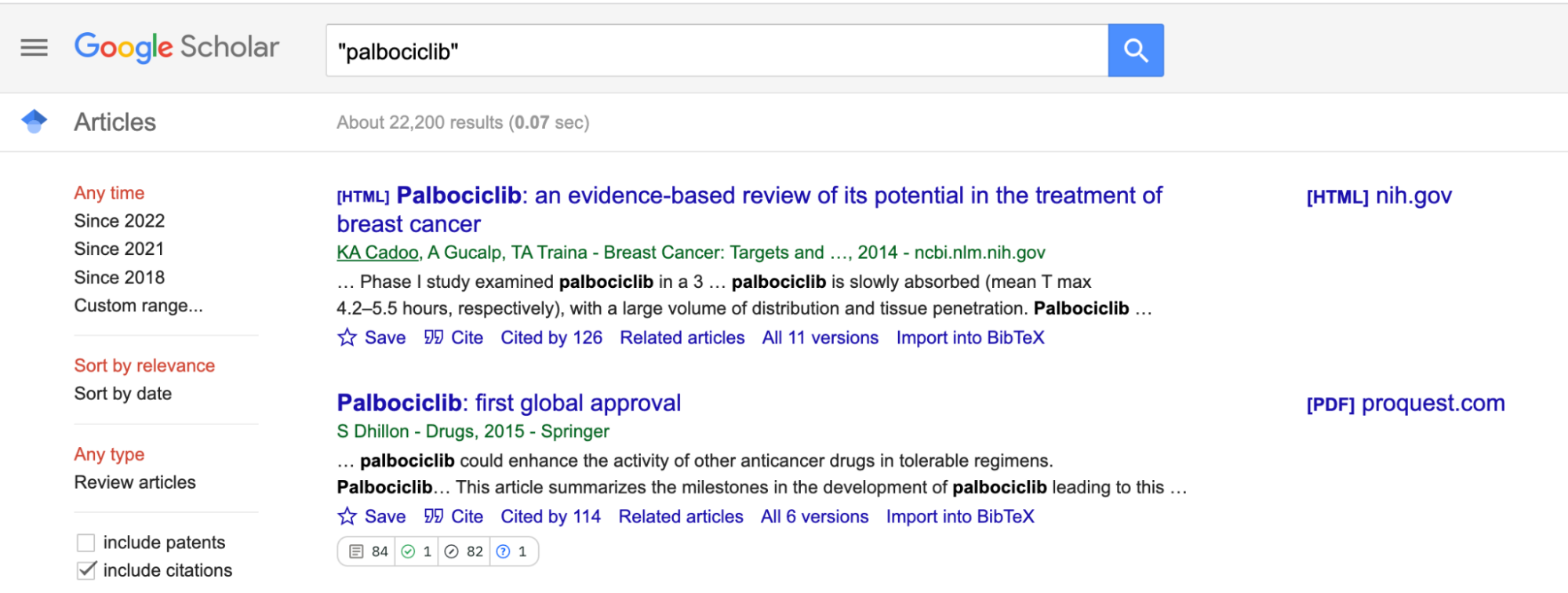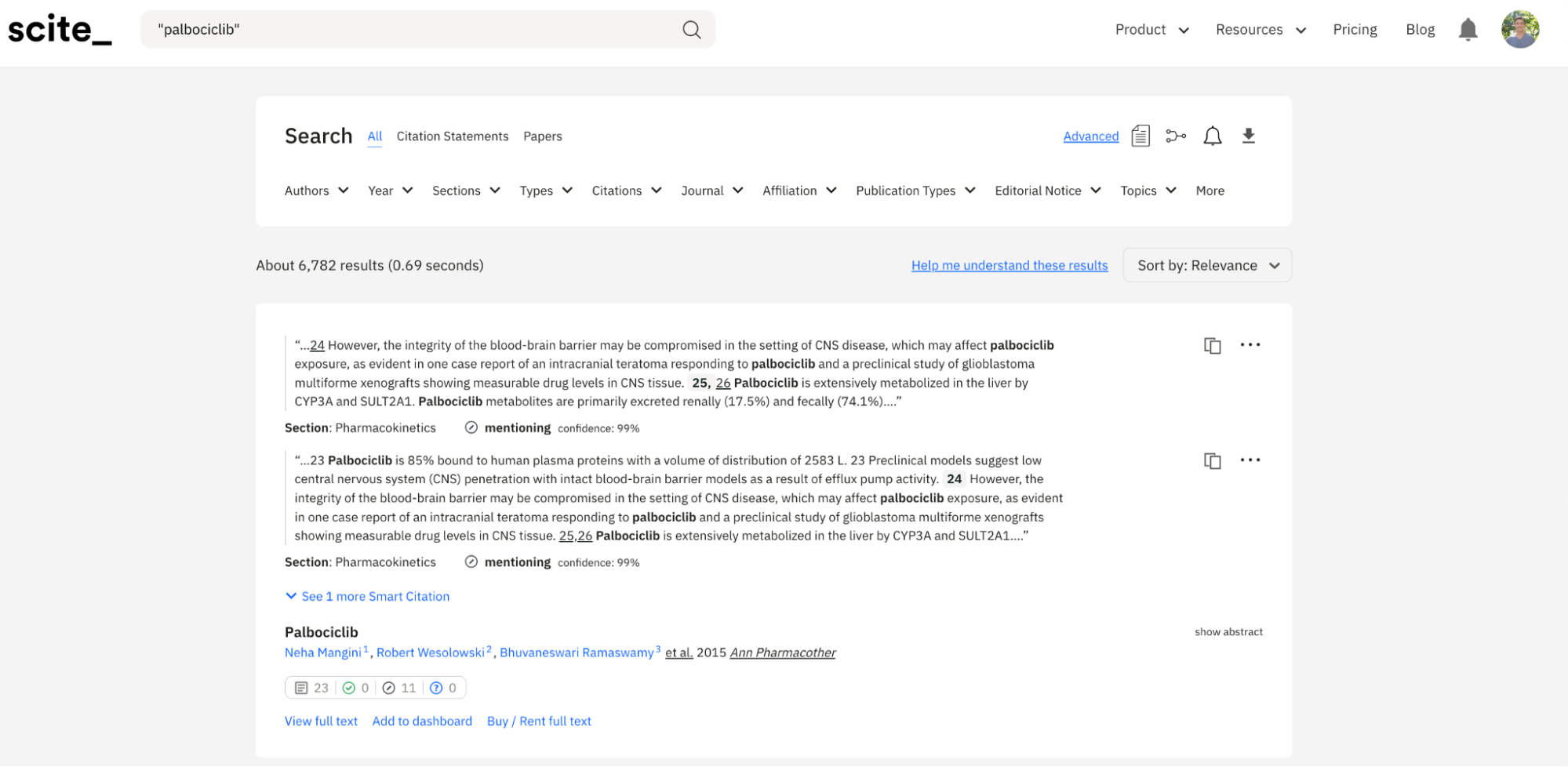Lighting up the Scientific Article: How Citation Statements Can Turn Key Topics in Articles into Rich Sources of Information
Learn how our Citation Statements can help readers get a qualitative understanding of any topic.
Wed Sep 21 2022Citation indices show how articles, researchers, and institutions have been cited. However, when it comes to specific keywords or terms, one can only see how articles mentioning them have been cited, not how the terms themselves have been cited. Full-text search does show how many times key phrases have been mentioned, but still requires researchers to open all matched articles to see exactly how the phrase was used beyond the abstract. What if you wanted to see what was said about a drug and its adverse effects, straight from the literature? Or maybe you wanted to track one of your reagents to see how it’s being used in methods sections, without manually opening each and every paper and scanning them yourself.
At scite, we’ve built the world’s largest database of Smart Citations, each of which displays exactly what was said about a particular paper by a newer publication. In our mission to enable researchers, we have a unique search experience built around this network of citation contexts. By searching for specific terms, users can see statements indexed from full-text articles matching their query, allowing them to see exactly how a particular drug, phrase, or idea has been discussed in the literature.
We think this can be used by publishers to “light up” a scientific article on their version of record. When particular keywords appear, like reagents, or drugs, what if those terms could be linked to a page that helps users rapidly build a qualitative understanding about it? This can take countless hours, but we think that by leveraging scite’s Citation Statement Search, it’s possible to seamlessly light up a scientific article and help users chase down ideas and topics, instead of just citations.
The current waySay you are a researcher interested in learning more about the CDK4 inhibitor "palbociclib." First, you might try searching palbociclib in something like Google Scholar. If you do that, you find over twenty thousand papers mentioning it. Google Scholar does show you the key phrase used in the full-text article, but it only returns fragments of sentences showing how it was matched, without enough context to help you understand how it was discussed.

Other tools such as Web of Science, Scopus, or EBSCO, return even less information than Google Scholar, showing only the title and abstract of the matched articles. Seeing exactly how palbociclib has been cited or discussed – for example, to see if there were any adverse events reported – would require you to open all matched articles, which could take hours or days of work.
At scite, our citation statement search makes it easy to see how any concept or phrase has been discussed in the literature directly by showing you the sentence it was matched in and the sentence before and after. This citation context is often enough to understand how exactly the term has been cited without having to open every article.

Considering citation statements or “citances” as they have been called before as first-class standalone entities like abstracts or titles open up new possibilities for their use. What if instead of only showing citation metrics for articles, we used citation statements to “light up” the scientific article? What if we directly linked key phrases and terms to citation statements?
Consider the following paragraphs from a PLOS article below showing how citation statements could be linked in full-text articles.
The ability to sustain uncontrolled cell proliferation is one of the hallmarks of cancer cells [1]. The normal process of cell division depends on the cell cycle, a series of highly regulated steps manipulated by a set of specific cyclins that act in association with cyclin-dependent kinases (CDKs) [2–4]. The CDK4/6 complex plays a key role in cell cycle progression via monophosphorylation of retinoblastoma protein (RB) and subsequently promotes G1-S phase transition [5, 6].The clinical implementation of first-generation nonselective CDK inhibitors was originally hampered by the high toxicity and low efficacy of these agents [7, 8]. Second-generation selective CDK4/6 inhibitors, including palbociclib, ribociclib, and abemaciclib, can induce G1 phase cell cycle arrest in RB-positive tumor models with improved effectiveness and reduced adverse effects [9–17]. On the basis of the significant improvements in progression-free survival (PFS) in the PALOMA-1, MONALEESA-2 and MONARCH-1 and 2 clinical trials, palbociclib, ribociclib, and abemaciclib received FDA approval for the treatment of hormone receptor (HR)-positive and human epidermal growth factor receptor 2 (HER2)-negative breast cancer [18–20]. However, not all of these patients could benefit from treatment with CDK4/6 inhibitors [21, 22]. Therefore, biomarkers for predicting the response to these drugs are needed.As you’ll notice, only cited articles are linked. What if instead of only linking to articles, we also linked to terms like palbociclib, ribociclib, and others? The following article would then look something like this:
“The ability to sustain uncontrolled cell proliferation is one of the hallmarks of cancer cells [1]. The normal process of cell division depends on the cell cycle, a series of highly regulated steps manipulated by a set of specific cyclins that act in association with cyclin-dependent kinases (CDKs) [2–4]. The CDK4/6 complex plays a key role in cell cycle progression via monophosphorylation of retinoblastoma protein (RB) and subsequently promotes G1-S phase transition [5, 6].The clinical implementation of first-generation nonselective CDK inhibitors was originally hampered by the high toxicity and low efficacy of these agents [7, 8]. Second-generation selective CDK4/6 inhibitors, including palbociclib, ribociclib, and abemaciclib, can induce G1 phase cell cycle arrest in RB-positive tumor models with improved effectiveness and reduced adverse effects [9–17]. On the basis of the significant improvements in progression-free survival (PFS) in the PALOMA-1, MONALEESA-2 and MONARCH-1 and 2 clinical trials, palbociclib, ribociclib, and abemaciclib received FDA approval for the treatment of hormone receptor (HR)-positive and human epidermal growth factor receptor 2 (HER2)-negative breast cancer [18–20]. However, not all of these patients could benefit from treatment with CDK4/6 inhibitors [21, 22]. Therefore, biomarkers for predicting the response to these drugs are needed.”With this implementation, readers could click on the drugs or clinical trials mentioned in the paragraph above, making it easy to see exactly how they have been discussed in the literature, who has published the most on them, what the debates are, and more.
If you’re a publisher interested in “lighting up” your articles, please contact us at hi@scite.ai -- we’d love to hear from you. If you’re a researcher, let us know what you think and how this could be improved or any questions you have about it.

